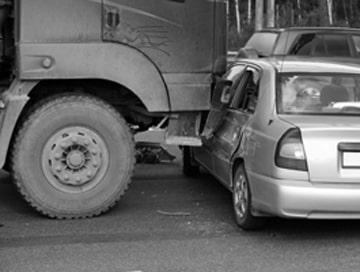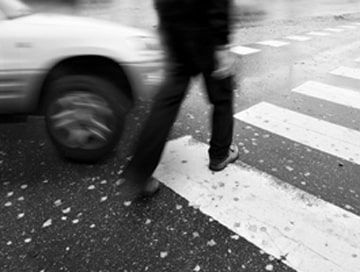
Have you ever wondered, ‘What is the leading cause of vehicle accidents?’
It’s a question that often lingers in the minds of concerned individuals who value road safety. Understanding the factors contributing to accidents is crucial for promoting awareness and implementing prevention measures.
In this blog post, we will dive into the topic and explore some of the leading causes of vehicle accidents. So fasten your seatbelts, and let’s hit the road.
The State of Road Safety
California, the Golden State, is not only known for its breathtaking landscapes and bustling cities but also for its roadways that crisscross the state. With a diverse population and a thriving economy, California attracts people from all walks of life. However, with the increasing number of vehicles on the road, road safety has become a critical concern.
According to statistics from the California Office of Traffic Safety, traffic fatalities are a significant public health and safety concern nationwide. Annually, the number of traffic fatalities in the United States reaches upwards of 36,000—and this figure is rising.
The first half of 2021, for example, witnessed an estimated 18.4 percent increase in traffic fatalities compared to the previous year, with approximately 20,160 reported fatalities. California experienced a 3.4 percent increase in traffic fatalities from 3,719 in 2019 to 3,847 in 2020. These alarming numbers highlight the need for concerted efforts to address unsafe driving behaviors.
The 5 Leading Causes of Road Accidents
1. Speeding
Speeding is a common driving behavior and a leading cause of road accidents. When drivers exceed the designated speed limit or drive too fast for the prevailing road conditions, they significantly increase the risk of accidents. According to the National Highway Traffic Safety Administration (NHTSA), speeding contributes to 26 percent of fatalities in motor vehicle accidents.
Speeding reduces a driver’s ability to react to sudden changes on the road. When a driver is traveling at high speeds, their field of vision narrows, and their peripheral awareness diminishes. This means they have less time to perceive and respond to potential hazards, such as sudden lane changes, pedestrians crossing the road, or unexpected obstacles. Consequently, the likelihood of a collision occurring due to delayed reactions becomes much higher.
Additionally, higher speeds increase the stopping distance required to bring a vehicle to a halt. When a driver encounters an emergency situation or needs to make an abrupt stop, the distance covered during the reaction time and the distance required to brake effectively are both amplified. Suppose a driver is traveling at excessive speeds. In that case, their vehicle will need more time and space to come to a complete stop, increasing the risk of rear-end collisions or collisions with other vehicles at intersections.
Furthermore, the severity of accidents increases when speeding is involved. The force of impact during a collision grows exponentially with speed. The faster a vehicle is traveling, the more energy it carries, and the greater the force exerted upon impact. As a result, accidents at higher speeds tend to cause more severe injuries and a higher likelihood of fatalities.
To combat the dangers of speeding, drivers must adhere to posted speed limits and adjust their speed according to road conditions. This means slowing down when encountering adverse weather conditions, construction zones, or areas with heavy traffic. It also means being aware of speed limits in residential areas, school zones, and areas with a high pedestrian presence.
2. Driving Under the Influence
Driving under the influence (DUI) is a grave concern and a leading cause of motor vehicle accidents. In 2020, there were 1,159 fatalities in crashes involving drivers or motorcycle riders with a blood alcohol concentration (BAC) of 0.08 grams per deciliter (g/dL) or higher. This accounted for 30 percent of California’s total fatalities.
When a driver operates a vehicle while impaired by alcohol or drugs, their ability to safely navigate the roads is significantly compromised. Driving under the influence not only endangers the impaired driver but also poses a severe risk to other road users.
Alcohol and drugs impair crucial skills for safe driving, such as reaction time, judgment, coordination, and perception. Impaired drivers often exhibit delayed reaction times, making it difficult to respond promptly to changing road conditions or unexpected events.
Their judgment becomes inadequate, leading to risky decisions, such as running red lights, tailgating, or making unsafe lane changes. Coordination, including hand-eye coordination, becomes compromised, making it challenging to control the vehicle.
Moreover, impaired drivers experience altered perception, which affects their ability to accurately assess distances, speeds, and hazards on the road. This can lead to dangerous maneuvers, misjudgments of gaps in traffic, or failure to recognize pedestrians or cyclists.
Driving under the influence is not limited to alcohol but also includes drug impairment. Both legal and illegal drugs—including prescription medications—can impair a driver’s abilities and increase the risk of accidents. In 2019, approximately 50 percent of drivers killed in motor vehicle crashes in California tested positive for legal or illegal drugs.
It is imperative to avoid getting behind the wheel if you have consumed alcohol or drugs that impair your abilities. Designating a sober driver, using public transportation, or relying on rideshare services are alternative options to ensure safe travel. Additionally, community education and targeted awareness campaigns can help deter individuals from driving under the influence and promote responsible choices.
3. Distracted Driving
Distracted driving is any activity that diverts a driver’s attention from the primary task of driving. With the prevalence of smartphones and other portable electronic devices, distractions behind the wheel have become more pervasive than ever.
Most collisions are caused by texting or using a smartphone while driving. When a driver diverts their attention to read or send a text message, they take their eyes off the road, hands off the steering wheel, and focus away from the task of driving. This impacts their ability to react to sudden changes in traffic or road conditions.
Apart from texting, other common distractions include talking on the phone, eating or drinking, grooming activities, adjusting vehicle controls, or interacting with passengers. These activities can lead to delayed reaction times, impaired decision-making, and a loss of situational awareness. Even a momentary lapse in attention can have severe consequences on the road.
4. Drowsy Driving
Drowsy driving is an often overlooked yet significant cause of vehicle accidents. When drivers operate a vehicle while fatigued or excessively sleepy, their ability to concentrate, react, and make sound decisions becomes severely flawed. This can have devastating consequences on the road.
Fatigue affects a driver’s alertness, attentiveness, and overall cognitive abilities. When a person is sleep-deprived or exhausted, their reaction times become slower, similar to those of drivers under the influence of alcohol or drugs. Fatigue can also impair a driver’s judgment and ability to assess risks accurately. As a result, drowsy drivers may make poor decisions, such as misjudging the distance between vehicles, failing to recognize hazards, or drifting out of their lanes.
Furthermore, drowsiness can lead to microsleep episodes, which are brief moments of involuntary sleep lasting from a few seconds to several minutes. During these episodes, a drowsy driver becomes completely unaware of their surroundings and loses control of the vehicle. Microsleeps can occur even when a driver’s eyes are open, posing an extreme danger on the road. Worryingly, according to a study by the Centers for Disease Control and Prevention (CDC), 1 in 25 drivers had fallen asleep while driving in the previous 30 days.
Drowsy driving often occurs during nighttime, when the body’s natural sleep-wake cycle is at its lowest point. However, it can happen at any time of the day, especially for individuals who have sleep disorders, work night shifts, or suffer from chronic sleep deprivation. Long-distance driving, monotonous roads, and the use of sedating medications can also contribute to drowsy driving.
If drowsiness strikes during a journey, it is essential to pull over to a safe location and take a nap or rest until feeling refreshed. Consuming caffeinated beverages, such as coffee, can provide a temporary boost but should not be relied upon as a long-term solution.
5. Unsafe Merging
Unsafe merging is another common cause of road accidents, particularly on highways and busy roadways. Merging refers to the act of transitioning from one lane or roadway into another. It is a critical maneuver that requires careful observation, judgment, and coordination with other drivers. Unfortunately, when merging is done unsafely, it can lead to collisions or near-misses.
Unsafe merging typically occurs when drivers fail to execute the maneuver properly or neglect to take necessary precautions. One common mistake is failing to check blind spots before changing lanes. Blind spots are areas around a vehicle that the driver cannot directly observe using mirrors. When a driver fails to check blind spots, they may not be aware of other vehicles in adjacent lanes, leading to sideswipe accidents or forcing other drivers to take evasive action to avoid a collision.
Another factor contributing to unsafe merging is misjudging the speed of other vehicles. When merging, it is vital to accurately assess the speed and distance of approaching vehicles. Underestimating these factors can result in a driver merging too early, cutting off other vehicles, or merging too late, forcing other drivers to brake suddenly or swerve to avoid a collision.
Furthermore, signaling allows other drivers to anticipate a lane change or merging maneuver, giving them time to adjust their driving accordingly. When a driver fails to signal, it can lead to confusion, surprise, and a higher likelihood of accidents occurring.
Tips for Staying Safe on the Road
Now, you know the answer to the question ‘What is the most common cause of collisions?’ Next, let’s explore a few easy-to-follow steps you can use to reduce the risk of accident.
- Observe and Follow Traffic Laws: Adhering to traffic laws is essential for maintaining road safety. Follow speed limits, stop at red lights and stop signs, yield to pedestrians and other vehicles when required, and use turn signals for lane changes and turns.
- Avoid Distractions: Minimize distractions while driving and stay focused on the road. Keep your smartphone out of reach or use hands-free options for calls and navigation. Avoid eating, grooming, or engaging in any activity that diverts your attention from driving. You can react quickly to potential hazards by eliminating distractions and maintaining situational awareness.
- Drive Defensively: Defensive driving involves anticipating and responding to potential hazards. Maintain a safe following distance from the vehicle in front of you, allowing for ample reaction time. Check your mirrors frequently, scan the road ahead, and be aware of your surroundings.
- Stay Alert and Avoid Fatigue: Fatigue can impair your driving abilities, making it crucial to stay alert on the road. Get sufficient sleep before long drives, take regular breaks during extended journeys, and avoid driving during hours when you would typically be asleep.
- Maintain Your Vehicle: Regular vehicle maintenance is essential for safe driving. Keep your tires properly inflated, check your brakes regularly, and ensure that all lights are functioning correctly. Routine maintenance can prevent unexpected mechanical failures and help maintain control of your vehicle.
- Buckle Up and Ensure Passenger Safety: Always wear your seatbelt, and ensure that all passengers are also properly restrained. Seatbelts significantly reduce the risk of severe injuries or fatalities in the event of an accident. If you have young passengers, ensure they are secured in appropriate child safety seats.
- Be Prepared for Emergencies: Carry a well-equipped emergency kit in your vehicle, including a spare tire, jack, jumper cables, flashlight, and basic first aid supplies. Familiarize yourself with the location of emergency services along your route, and program important contact numbers, such as roadside assistance, into your phone.
Remember, accidents can still happen even if you follow all safety precautions. In the unfortunate event of a car accident, contacting a trustworthy Bakersfield car accident lawyer who can guide you through the legal process and protect your rights is essential.
Together, We Can Make the Road a Safer Place for All
Your safety on the road should always be a top priority. By following the tips mentioned above, you can reduce the risk of accidents and ensure a safer driving experience for yourself and others. However, if you find yourself involved in a car accident, don’t hesitate to contact us at Kuzyk Law.
Our team of experienced personal injury attorneys is dedicated to helping you every step of the way. We will evaluate your case, identify the responsible parties, and investigate the accident thoroughly. Our expertise includes gathering evidence, interviewing witnesses, and reconstructing the accident to present a compelling case.
We take care of all aspects of your lawsuit, from filing and handling insurance paperwork to representing you in mediation, arbitration, and trials. Trust us to handle your legal matters so that you can focus on your recovery. Contact us today for a consultation, and let us fight for the compensation you deserve.
Remember, road safety is a collective responsibility. By staying vigilant, driving responsibly, and seeking legal assistance when needed, we can work together to make our roads safer for everyone.













